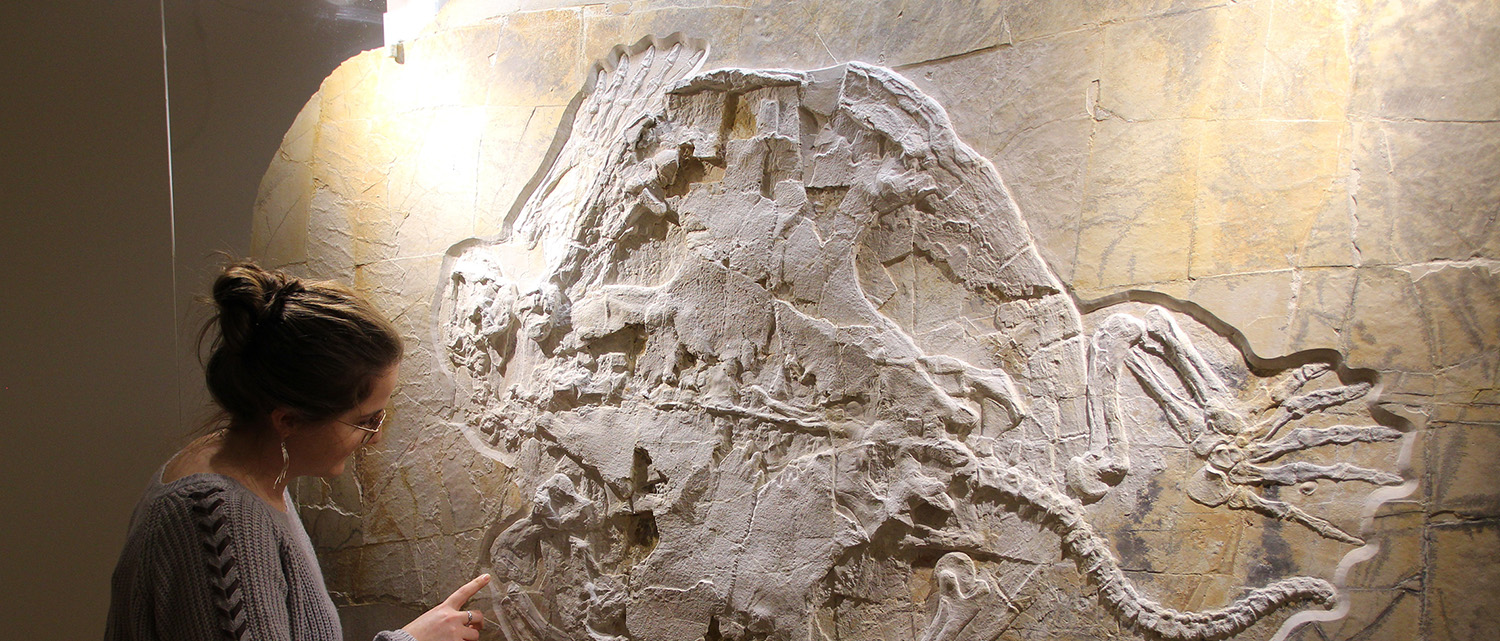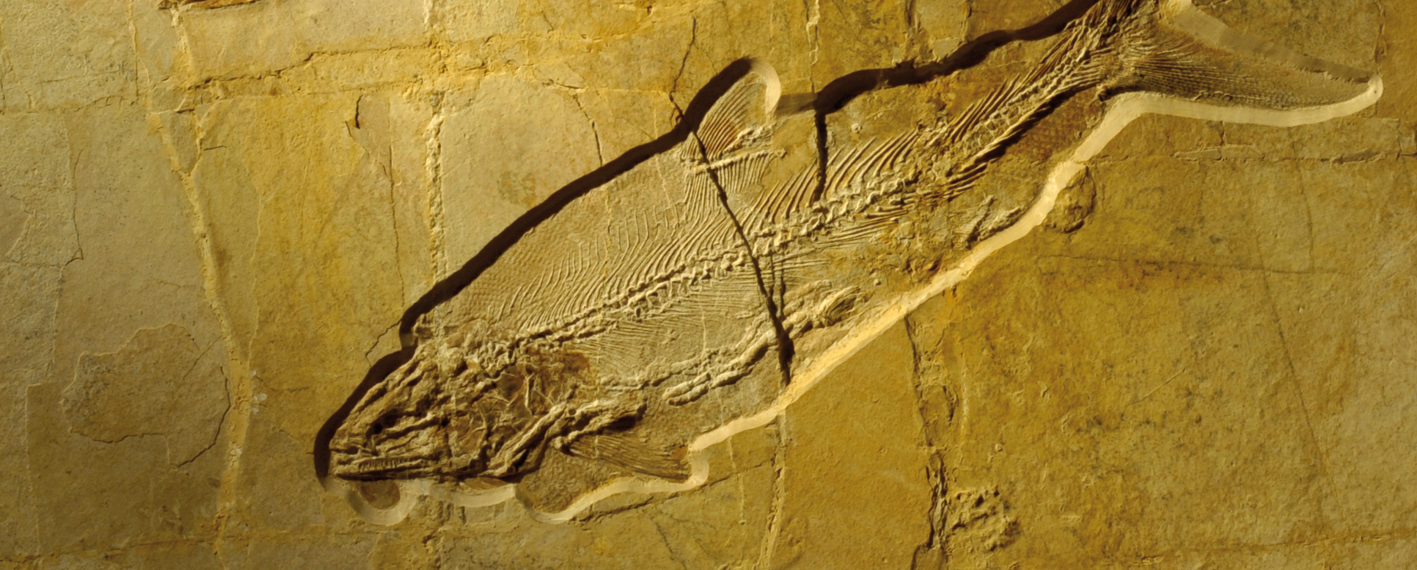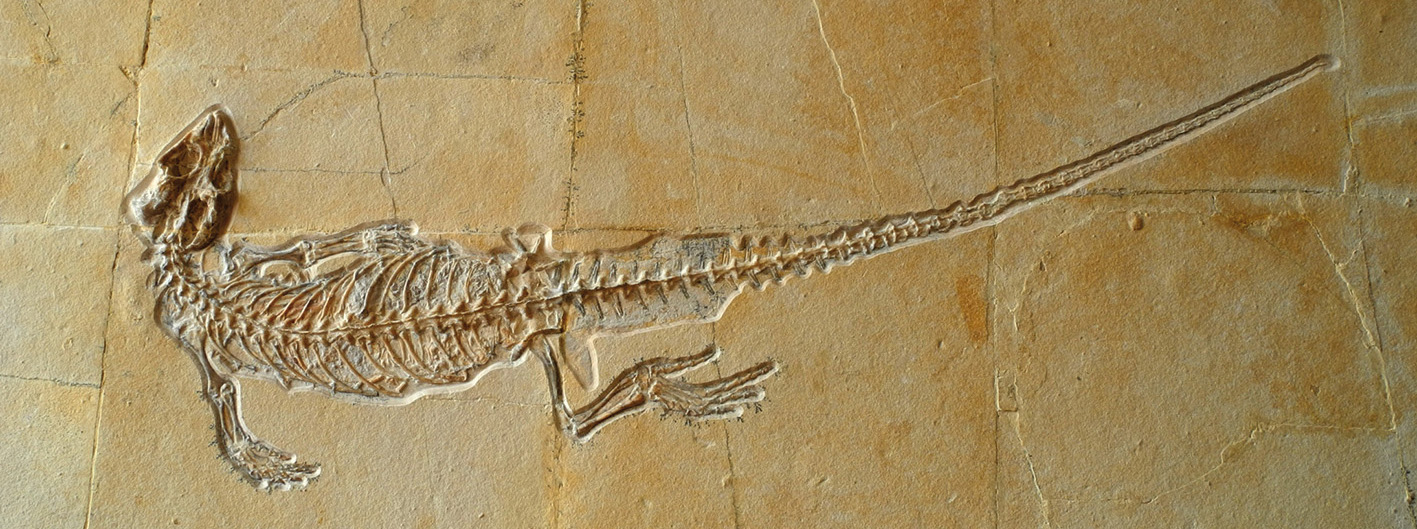Paleontological Collections
The paleontological collections today house an estimated 30,000 objects from Germany and from abroad. The objects include finds from all geological eras, but have a clear focus on regional sites from the Jurassic period. In the last two decades, the collection has been considerably expanded by the museum’s own excavations in the Upper Jurassic plate limestones of Wattendorf/Upper Franconia.
The historical part of the collection from the 19th century was partly collected by the respective curators themselves, partly also purchased from the company Dr. Krantz/Bonn. From the first half of the 20th century on, the collecting activity was mainly concentrated on the Franconian Jura. The ammonite collection of Theodor Schneid with about 1300 single objects, among them extensive type material, has to be emphasized. Scientifically valuable are also the collection of A. Müller with 700 plant fossils from the lowest Lias of Großbellhofen near Schnaittach/Mittelfranken, collections of Oskar Kuhn from the Lias and Dogger of Franconia (about 2000 objects) and the collections Schattenberg and Schrüfer with fossils from the Malm of Franconia. Already since 1989 extensive collections from all layers of the Franconian Jurassic have been made by the geoscientific preparator of the museum, Thomas Bechmann.


